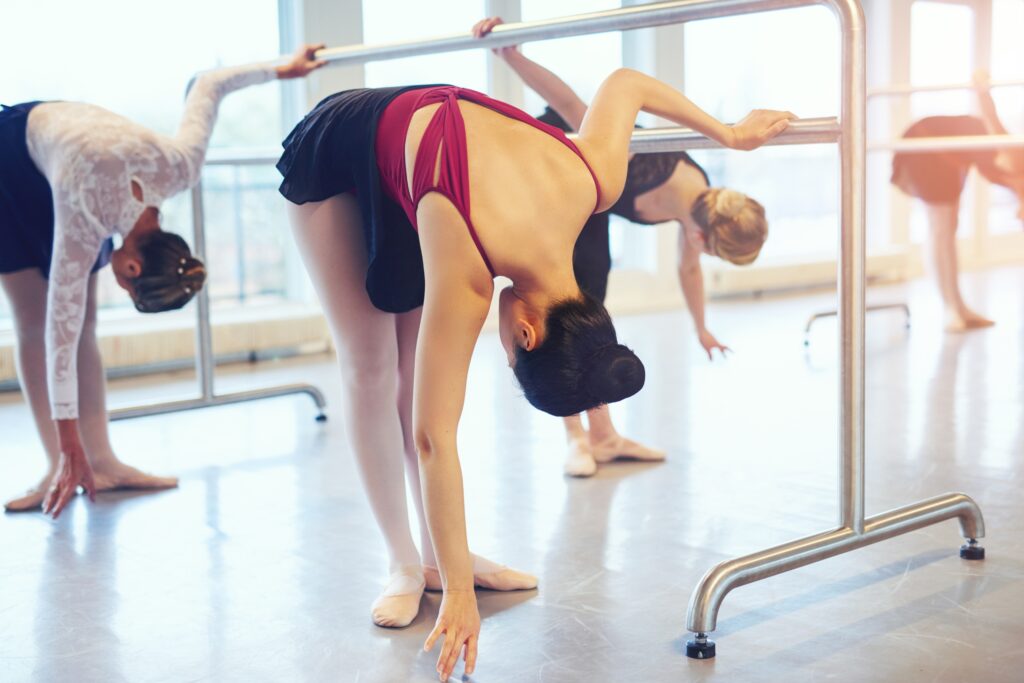Flexibility is one of the most essential aspects of dance. For young dancers, improving flexibility not only helps with performance but also prevents injuries and supports overall body development. Stretching should be done safely and consistently to ensure children gain strength and control while also enjoying their practice.
When children begin dance, flexibility allows them to move more freely, perform new steps with ease, and build confidence. Without proper stretching, their bodies may feel stiff, which makes it harder to achieve smooth and controlled movements. Stretching also prepares muscles and joints for more challenging routines as they progress in their dance journey.
Why Flexibility Matters in Dance
Dance requires a wide range of motion, from high kicks to smooth turns and long extensions. Flexibility helps dancers achieve these movements without strain. For children, flexibility is closely linked to balance and coordination. The earlier they learn safe stretching habits, the easier it is to develop good posture and proper alignment.
Flexibility is also essential for injury prevention. Muscles that are regularly stretched are less likely to tear or strain during vigorous movements. By including stretching in their routine, young dancers build stronger and healthier bodies that can support years of training.
Safe Stretching Practices for Kids
Before starting any stretch, children should warm up with light movements such as jogging on the spot or gentle skips. Stretching cold muscles can increase the risk of injury. All stretches should be done slowly and carefully, without bouncing or forcing the body into uncomfortable positions.
Breathing is also essential. Taking slow breaths during a stretch helps the body relax and makes the movement more effective. Parents and teachers should encourage children to listen to their bodies and stop if they feel any pain. Stretching should feel gentle, never painful.
Stretches for the Lower Body
The lower body plays a key role in almost every dance move. Strong and flexible legs, hips, and feet are essential for jumps, kicks, and turns.
Hamstring Stretch
The hamstrings are the muscles at the back of the thighs. Tight hamstrings can make it difficult to straighten the legs or lift them high. A simple way for young dancers to stretch these muscles is by sitting on the floor with legs straight out in front and reaching gently towards the toes. The aim is to keep the back straight and bend from the hips.
Butterfly Stretch
This stretch targets the inner thighs and hips. Sitting on the floor, children place the soles of their feet together and gently press their knees towards the ground. They can hold their ankles while keeping their backs straight. This position helps improve turnout, which is essential in ballet and other dance styles.
Calf Stretch
Calves support jumps and balance. To stretch them, children can stand facing a wall, place one foot behind the other, and press the back heel into the floor. Keeping both feet flat while leaning forward stretches the calves safely.
Stretches for the Upper Body
Dance is not only about the legs. Flexibility in the upper body helps with posture, arm movements, and overall flow.
Side Stretch
Standing with feet shoulder-width apart, children raise one arm overhead and lean gently to the opposite side. This stretches the sides of the body and helps with balance and alignment.
Shoulder Stretch
To release tension in the shoulders, children can bring one arm across the chest and use the other arm to hold it in place. This stretch helps prepare the upper body for expressive arm movements.
Back Stretch
Lying on the floor and pulling both knees to the chest provides a gentle stretch for the lower back. This is especially helpful after dancing, as it relaxes the spine and eases tension.
Dynamic Stretches
Dynamic stretches involve movement and are great before class or practice. They help increase blood flow and prepare the muscles for action.
Examples include gentle leg swings, walking lunges, or arm circles. These movements are controlled and safe, helping young dancers feel ready for more active routines.
Building Flexibility Over Time
Flexibility is not something that happens overnight. For children, progress comes with regular practice. Short stretching sessions a few times a week are more effective than long and infrequent sessions. Consistency helps the body adapt and gradually improve the range of motion.
It is also essential to combine stretching with strength training. Strong muscles support flexible joints and reduce the risk of injury. For example, core exercises like planks or bridges help dancers hold extended positions with stability.
Encouraging Healthy Habits
Parents and teachers play an essential role in helping young dancers stretch safely. Creating a positive environment where children feel supported encourages them to enjoy stretching rather than seeing it as a chore. Using music, counting games, or making stretching part of playtime can make it more enjoyable.
Children should also understand that everybody is different. Some may gain flexibility quickly, while others take more time. Comparing progress can lead to frustration. Instead, celebrating minor improvements helps build confidence and motivation.
Conclusion
Flexibility is a key part of dance, and stretching safely from a young age builds a strong foundation for future growth. With regular practice, children improve their range of motion, protect their bodies from injuries, and gain confidence in their movements.
Kew School of Dance guides young dancers through safe and effective stretching routines that support their learning and enjoyment. To find out more about our classes and how we can help your child improve their flexibility, contact us at 03 9123 8458 or 0410 311 008.








